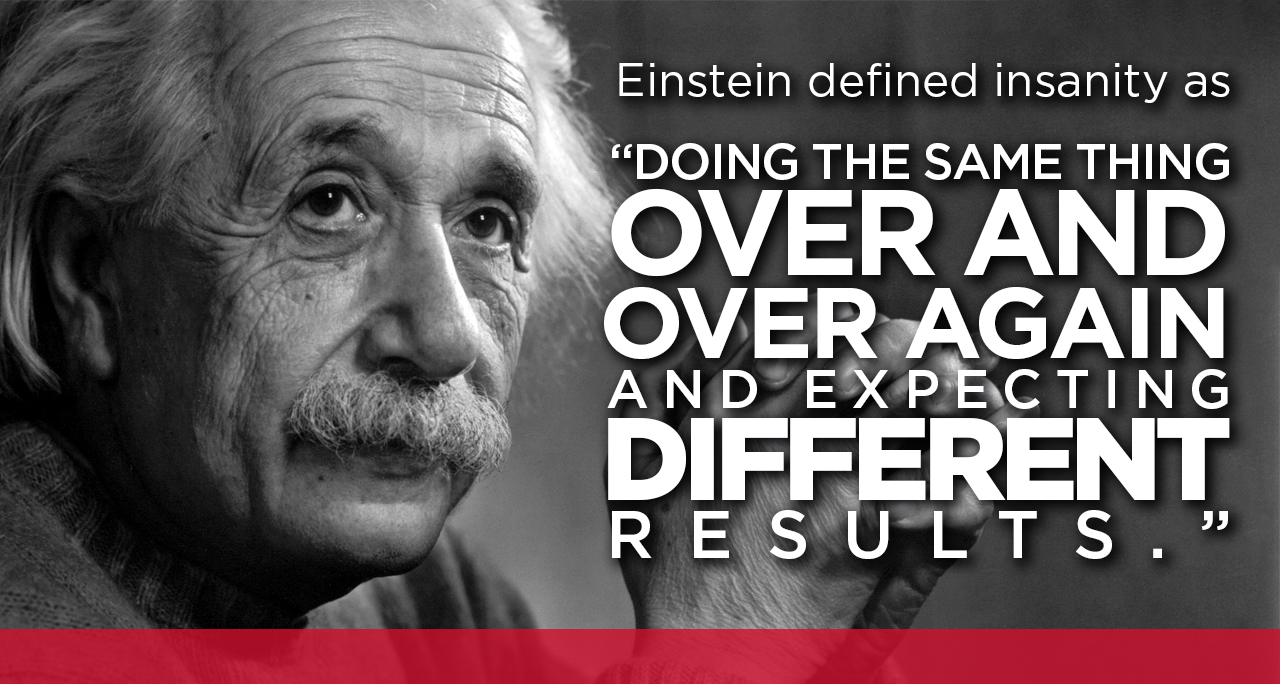How Do You Tip a Sacred Cow? Strength and Patience.
Einstein defined insanity as “doing the same thing over and over again and expecting different results.”
We all tend to agree with this — but do we as nonprofits put it into practice? Particularly in our fundraising work?

Echoing this same sentiment, management expert Tom Northrup once said, “All organizations are perfectly designed to get the results they are now getting.”
This hits home for me in the world of fundraising, where the same methods tend to get used over and over again just because “that’s the way they’ve always been done.”
As a result, these organizations are finding that they only ever achieve the same results or worse, that they are hitting a wall with their fundraising. Frustrated and desperate for answers as to why their age-old techniques aren’t getting the same results as before, they’re running around like chickens with their heads cut off, strapped for both time and revenue.
Ring a bell? Don’t worry… you’re not alone.
Whether it’s your annual gala or a year-end appeal, we all have campaigns, programs, and events that we repeat year after year without clear performance measurement. And we all have something that we are terrified to change — or even propose a possible change!
These are your sacred cows.
Our industry uses a lot of buzzwords (think “innovation” and “disruption”), but when it comes right down to it, we seem to value words more than actions. And understandably so! Making a substantial change or testing something new and abandoning a “sure thing” is a difficult line to toe.
But when we dare to take a leap of faith by questioning the status quo, we have the opportunity to test our organization’s traditional fundraising practices with something more effective, something that will increase your net income while making a bigger impact for your cause.
Ready for some cow tipping? No, really … are you ready? Because you need to prepare yourself to question everything you think you know and make necessary changes. Changes that your boss, your board, and sometimes your donors might not fall in love with right away.
As difficult as anything else in business is the ability to affect change amid a workforce who enjoys the comforting familiarity of habituated processes. In this case, I can offer you one clear instruction for success:
Demonstrate strong leadership and lots of patience!
A strong leader understands that you don’t necessarily have to chase every dollar no matter the time or energy required. Like with all endeavors, we encourage nonprofits to work smarter, not harder. Make more money with less stress. It sounds too good to be true, but we’ve seen it get results with many of the clients we have worked with.
Still sound impossible?
Then perhaps you haven’t taken a critical look at some of your sacred practices. Often, we are so entrenched in what we are doing on a day-to-day basis, no one has the time to step back and see the forest for the trees. If this sounds familiar, it may be time to introduce a fresh perspective into the mix. Someone from the outside may be better equipped to analyze the bigger picture, as they will be unbiased and not emotionally attached to “the way things have always been done.”
We have been able to step in and be that fresh perspective for a number of our clients. It took strong leadership on their part to admit that they needed a candid assessment of their programs — and then be ready to deal with the realities of our findings. Our clients, as with all nonprofits, have limited time, volunteers, budgets — and we have helped them use these resources in ways that have garnered the best results and most revenue.
Whether the impetus for change comes from within or without, it’s going to take a lot of patience. From your board to your employees, people will be reluctant to give up certain practices (especially if they appear to be bringing in money) — whether it’s a special event, a quarterly newsletter, a year-end appeal, or a too-heavily-relied-on program.
It’s up to you to get buy-in from your stakeholders, while keeping their concerns in mind. If you’ve done your homework and completed a thorough assessment of how you’re allocating your time, money, staff, and volunteers, with clear key performance indicators, you should be able to convince them that some calculated risks would be well worth the gamble.
From our years of experience, we know that it will take patience and strong leadership to facilitate the kind of change that will reap the results you want, but press on! As social activist Abbie Hoffman said, “Sacred cows make the best hamburger.”
In our next blog, we’ll show you how to identify some of these sacred cows and which ones to send out to pasture.

Meg Dawes is the Vice President of Strategic Services at Nexus Direct and can be reached at meg@nexusdirect.com.
